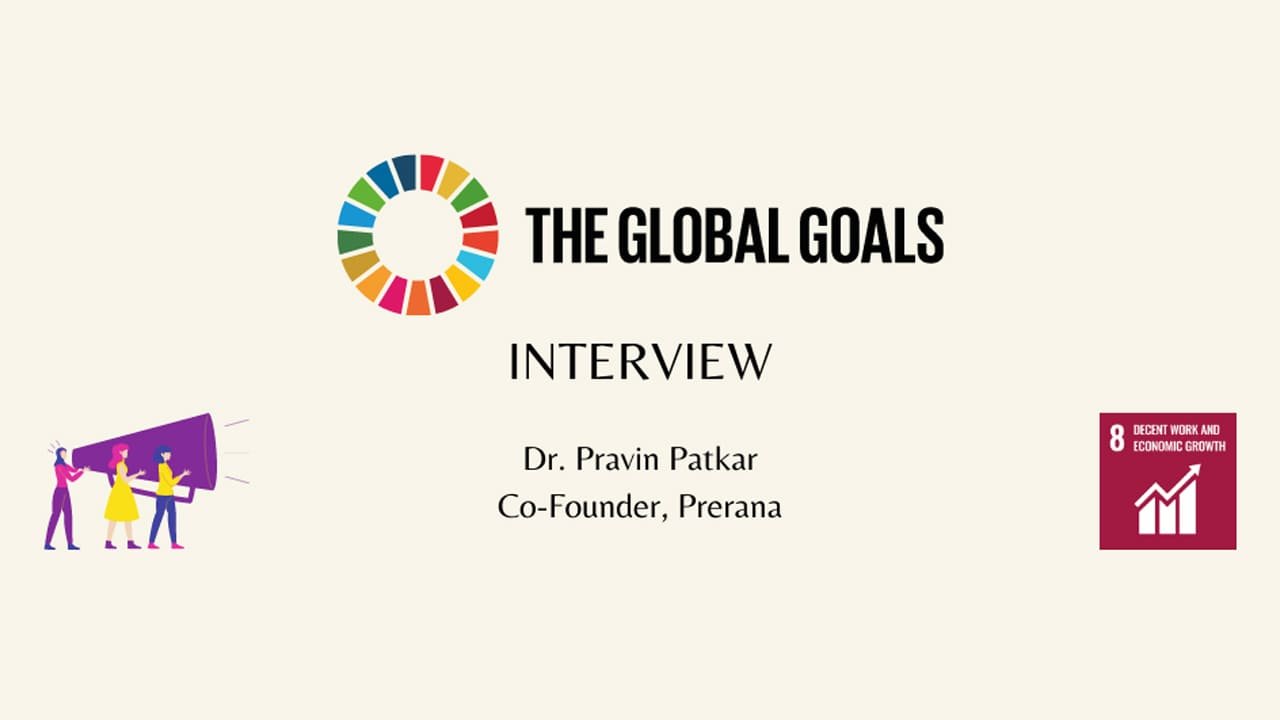Shatakshi Saxena
Project Coordinator (Documentation and Communications)
Dr. Pravin Patkar co-founded Prerana in the year 1986, along with Priti Patkar. He also founded Asia’s first Anti-Human Trafficking resource center in the year 1999, supported by the US Government. He has also served as an expert on several national and international agencies working in the anti-human trafficking sector. Aside from his commendable work in the anti-trafficking sector, Dr. Patkar is an academic and has been in the teaching profession for over forty years.
Prerana has been working towards the elimination of inter-generational trafficking for more than three decades now and Prerana’s Night Care Center model has been appreciated for its effectiveness in ensuring the safety of children. How does this model contribute to the eradication of forced labor and modern slavery?
Commercial Sexual Exploitation (CSE), otherwise known as the sex trade, is one of the worst forms of violence. It causes irreversible damage and condemnation to the person subjected to it. A significant number of the victims is that of children. Children of the sex trafficked women living as sex slaves being without any protection of support mechanisms fall easy victims to sex trafficking and CSE. In the absence of positive interventions, the daughters of the victims become easy and helpless recruits to the sex trade. The boys too are either prostituted and/or get inducted into the allied criminal activities like pimping, serving the customers drugs, and becoming traffickers themselves.
Prerana’s intervention is timely as it is in touch with the children born to the victim mothers even during pregnancy. Being placed in the midst of the red-light areas it is best localized, and comprehensive. It is preventive as it intervenes very early in the life of the children and is sustainable and replicable in most parts of the third world where the sex trade is localized .The intervention builds the required capabilities in the children such as formal education, vocational skills and hence employability, life skills, leadership qualities, and self-reliance. At Prerana, vocational counselling, guidance, training and job placement services are professionally designed and administered and sustainability is ensured at every stage. Prerana links these children and their mothers to a range of state agencies and civil society support systems and provides them with legal assistance to protect their rights. All these contribute to sustainability and decent work. From a socially degraded and thoroughly exploited lifestyle of their mothers, they take a flight to becoming responsible citizens and active workers contributing to the economy in a sustainable way.
Prerana’s Sanmaan program works closely with children rescued from begging and children living on the streets/in street-like conditions. Please share observations of how these children are vulnerable to forced labor and modern slavery.
The Sanmaan field project of Prerana protects children found in begging in public places and endeavors to put and keep them on the path of sustainable development. Children in begging are the least protected and cared for and most humiliated among the underprivileged children, hence are highly vulnerable to human trafficking for a variety of destinations such as slavery, worst form of child labor, organ harvesting and trade, pornography and sexual exploitation. Sanmaan protects them from the harsh realities of begging and supports those who are rescued and brought in the protective folds of the Juvenile Justice system without delinking them from their families. It strengthens their families whereby they are able to keep the children away from any harmful lifestyle such as begging. All these inputs have been established by time and help the children acquire better employability and negotiation potentiality. They also evolve into becoming a rich human resource for economic development and become the respected members of the society.
How important a role does rehabilitation play in securing the prohibition of the above mentioned forms of exploitation?
Exploitation and non-possession of negotiable employability skills including a minimum formal education are twins. As a child gets formal education, life skills and leadership qualities, they also acquire negotiating abilities. This helps them avoid the informal wage sector and enter into an organized work sector where there are systemic safeguards against exploitation and cheating.
The adolescent girls and young adults rescued from the sex trade represent the worst cocktail of a variety of disadvantages such as lack of formal education, lack of support systems, lack of protection mechanisms, absence of positive role models, impoverishment, dire need to earn income and absence of life skills. All of this put together makes a lethal combination against securing a decent job and a decent lifestyle. The post rescue journey of these rescued girls with Prerana is a classical example of how one can move from a lifestyle characterized by indecency and exploitative way of earning a livelihood to self-reliant life and decent work.
The journey starts with immediate post rescue assistance including shelter, nutrition, health services, mental health services including trauma informed victim centered counseling, legal assistance, open schooling, vocational guidance counseling training and job placement. The -Group homes supported and assisted by Prerana and other after care services help them circumvent certain logistical challenges in living near one’s workplace and create one’s own support system.
How do you think the Indian policy makers can contribute towards this goal in a better way? Are there gaps in policies that you have observed based on your experience in this sector?
India has one of the most excellent legislations against sex trafficking and sexual exploitation. It is further enriched with several policies, National Plan of Action, Child Protection Policies, Action Plans, and protocols. What is missing is the implementation of these instruments in text and spirit on ground. . Currently, there are a few minor gaps in the instruments but they can be filled with some legislative and administrative inputs. India has a vibrant and creative civil society sector with a firm footing on the ground and with a superior intellectual understanding of the issue. The civil society sector should be incorporated as a key factor driving the social policies. There is need to incorporate best practices by regularly revising these instruments through a continuous broad based consultative processes.
What are some of the challenges that CSOs face while working with children who are vulnerable to being exploited?
One of the major challenges is the lack of politico-administrative will power to translate the spirit and text of the policies into realities. There is procrastination at every administrative level especially on the ground. Another challenge is the rampant arbitrariness and personalization of public domain instead of uniformity, professionalism and rule of law. The lack of coherence and convergence in administrative domains also causes hardship to the victims and their champions. There is a need for genuine appreciation of the creative and responsible role of the civil society.
This is the third interview in the ten-month long series on Prerana’s commitment to sustainable development goals. Watch this space for more.








